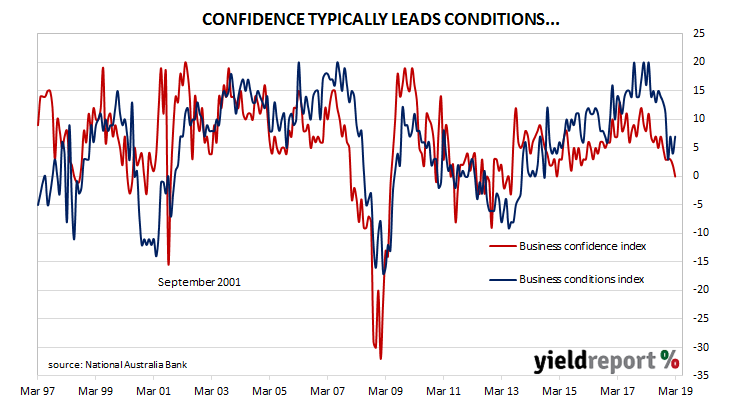Australian business conditions were robust in the first half of 2018 and a cyclical-peak was reached in April of that year. Although they remained well above average for some months, readings began to slip. By the end of 2018, the readings had plunged to below-average levels and they remained there through the first few months of 2019. At the same time, the confidence index continued to weaken.
According to NAB’s latest monthly business survey of 400 firms conducted in the middle of March, business conditions continued to bounce up and down. After several months of consecutive falls in the latter part of 2018, NAB’s conditions index bounced to 7 in January and then fell back to 4 in February, only to bounce back to 7 again in March. NAB chief economist Alan Oster said, “Business conditions saw a welcome increase to above-average levels with each subcomponent of the index rising. The employment index itself remains well above average, suggesting that for now, survey indicators of labour demand remain favourable. Against this, business confidence…weakened further in the month and continued the below-average run.” The latest reading of the confidence index fell again, this time from 2 to 0, a reading which is statistically well below the long-term average reading of 6. Typically, NAB’s confidence index leads the conditions index by approximately one month, although some divergences appear from time to time. After converging recently, the confidence index has once again diverged from the conditions index.
The latest reading of the confidence index fell again, this time from 2 to 0, a reading which is statistically well below the long-term average reading of 6. Typically, NAB’s confidence index leads the conditions index by approximately one month, although some divergences appear from time to time. After converging recently, the confidence index has once again diverged from the conditions index.

